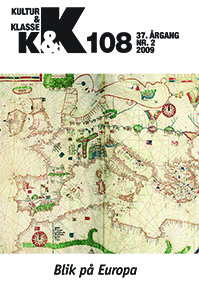Keaton og masserne
DOI:
https://doi.org/10.7146/kok.v37i108.22003Nøgleord:
Keaton, masserneResumé
Keaton and the Masses:
This article explores conflicts between individual and mass and the process of massification (i.e. the becoming and unfolding of masses) as comic potential in Buster Keaton’s physical comedies. This comic potential is basically characterized by a formalized and aestheticized reduction of human individuality when confronted with objective, non-human matter. De-individualization plays an important role in modern comedy in general. With his intense focus on massification, though, Keaton is not only one of the first, but also one of the most dedicated investigators of comic de-individualization by purely physical means.
The first part of the article considers the complex relations in Keaton between gag and narrative with specific regard to the conflict between the individual and the masses. Furthermore, the basic compositional elements in Keaton’s cinematographic staging of individual-mass conflicts are explored, including deactivation and isolation of the individual in relation to his immediate surroundings.
Subsequently, the different forms of massification in Keaton are examined more closely with reference to variation in their comic potential. Here, Keaton’s masses are grouped into three basic forms: In the solid mass—typically materialized in heavy objects and hard surfaces—the comic potential is due to its ability to violently tumble or jam the pacified individual into de-subjectified body mass. In the fluid mass, the comic potential is basically found in the unmanageable character of the soft, formless and constantly transforming phenomenon. In pure accumulation, Keaton focuses on the comic potential of the very formation of masses as a process of accumulation (i.e., the repetitive addition of discrete, more or less identical elements). Here, Keaton’s interest lies above all in the formation of human masses (crowds).
The last section considers Keaton’s cinematographic distribution of individual gags on the global scale of the entire film. Here, it is analyzed how Keaton incessantly glues the individual gags together into one large and seamlessly continuous gag. It is thus concluded that not only is each individual gag characterized by massification, but the way the different gags are interrelated throughout Keaton’s films also has a profound mass character.
Downloads
Publiceret
Citation/Eksport
Nummer
Sektion
Licens
Tidsskriftet følger dansk ophavsret.





